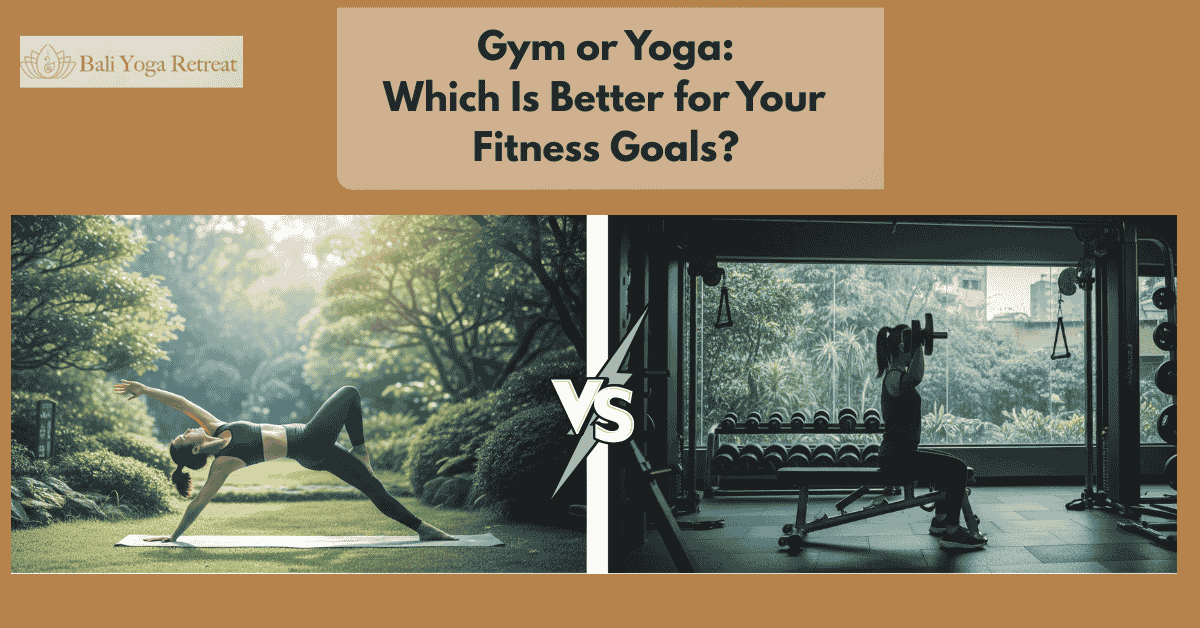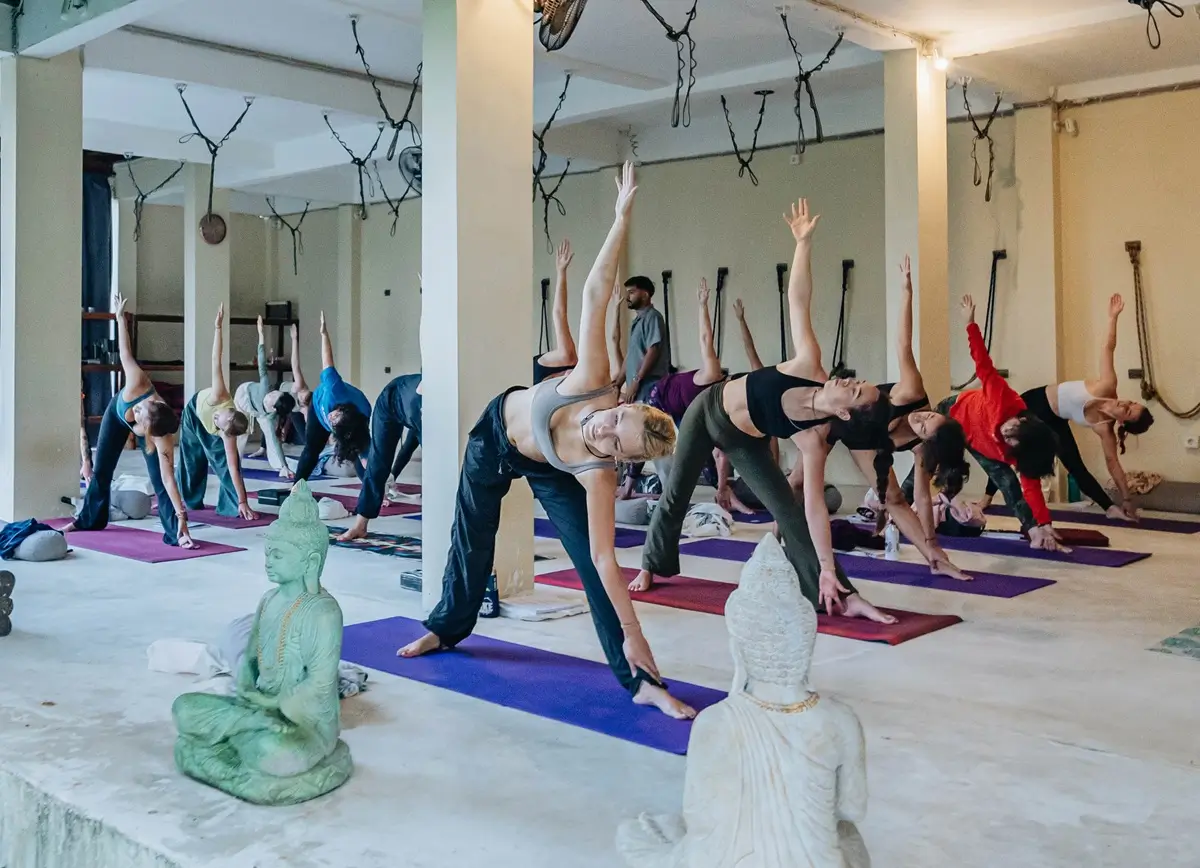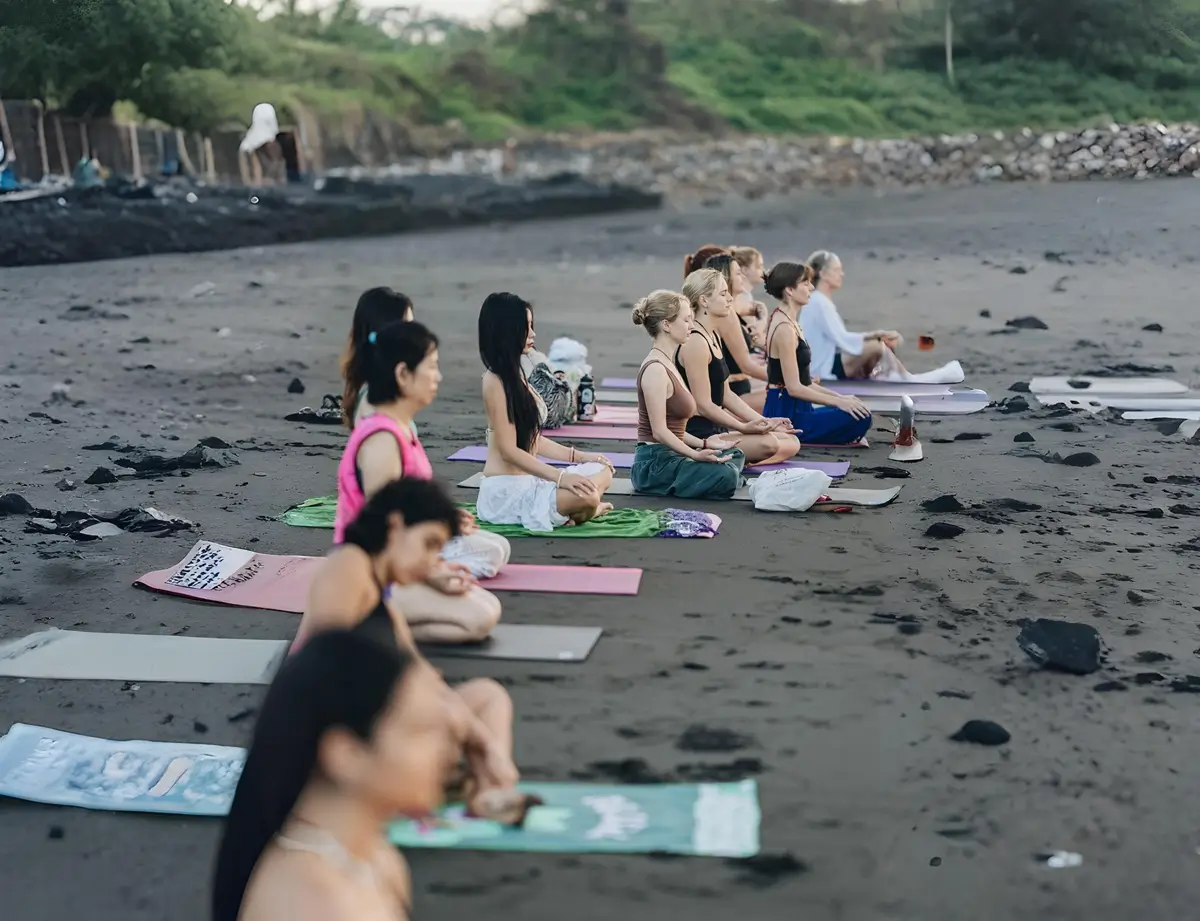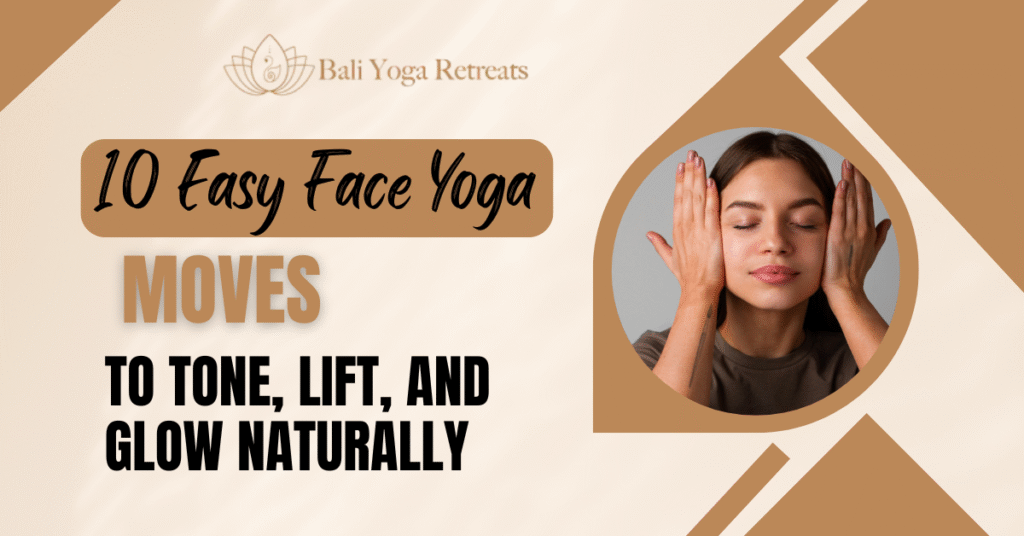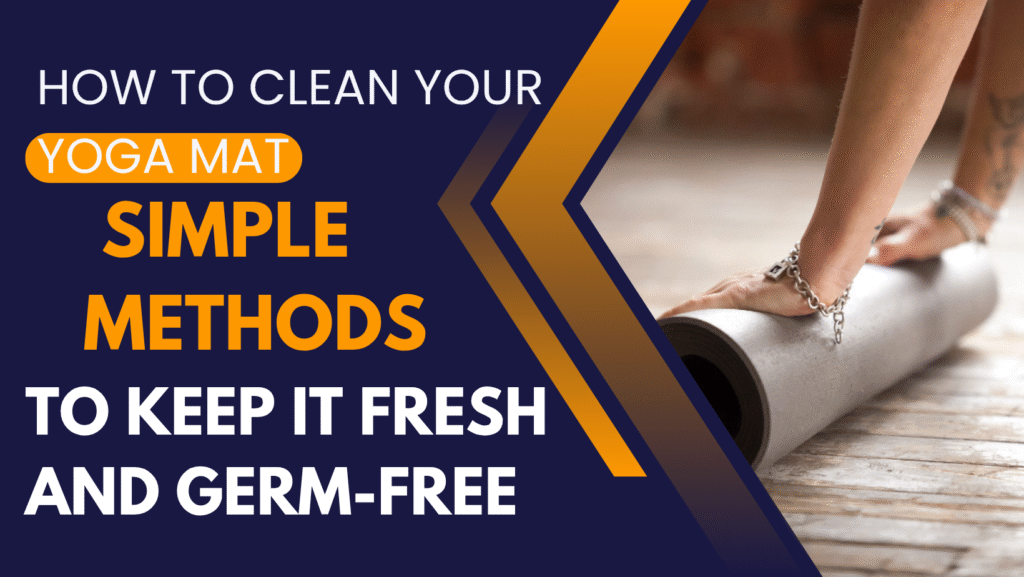1. Yoga vs Gym: Which One Suits You Best?
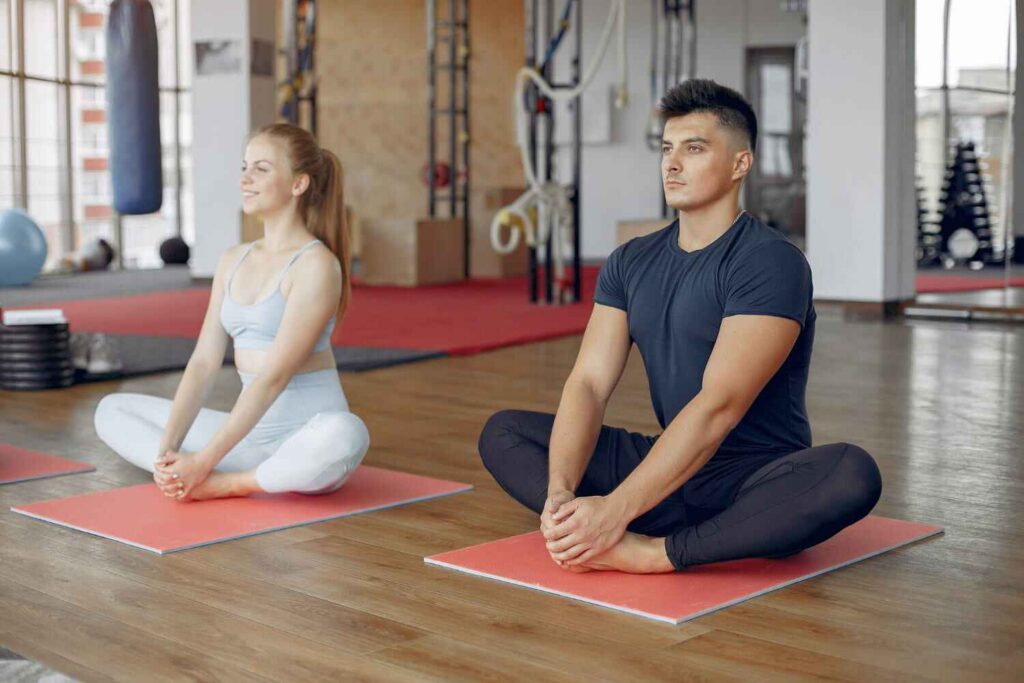
If you enjoy being fit, chances are, you are bound to ask yourself: Should I go to the gym or do yoga? Yoga vs gym. They are both great workouts, and both have their benefits. Gym workouts tend to emphasize strength, endurance and muscle gains, whereas yoga combines movement with mindfulness to help you stretch, strengthen and breathe your way to a better you.
Gym training and yoga have both been gaining popularity around the world for many years. People swear by the gym to completely transform their body, and people also find peace and balance through yoga. But in reality, it’s not about which is better across the board, but which one is better for you.
Below, in this blog we’ll break it all down to help you determine which will most closely fit with your personal fitness goals taught us.
2. Understanding Your Fitness Goals
Before deciding on gym or yoga, start by figuring out what you really want from your fitness regime. Here are some common goals:
Weight Loss
If you are trying to lose fat, you’ll want an activity that’ll burn calories and one that’ll help you lose the body fat, specifically.
Muscle Building
Gaining lean muscle increases strength, raises metabolism and sculpts the body.
Flexibility & Mobility
Decompressing is what allows you to avoid injuries, improves posture, and makes you more mobile in everyday movements.
Mental Wellness & Stress Relief
Fitness is not only about physical well-being. It’s also a key for stress reduction and peace of mind.
Overall Health & Longevity
Many people just want to be healthier, live longer, and prevent lifestyle diseases.
Rehabilitation from Injury or Chronic Pain
If you’ve been injured or experience pain (say, from back troubles), the type of fitness you decide to do must promote healing rather than further injury.
When you’ve defined your goals, it may also become easier to select between yoga and gym workouts — or meld the two.
3. Gym: Benefits and Limitations

Let’s start by understanding what the gym has to offer.
Benefits of Gym Workouts
Builds Strength and Muscle Mass:
The gym usually focuses on muscle building by lifting heavy weights and doing intense training, which helps in building strong muscles and improving body composition
Aids in Fast Calorie Burn:
By Performing High-intensity cardio workouts like cycling, running on treadmills, or HIIT sessions helps you burn a lot of calories in a short time if you maintain your proper diet along with it.
Access to Machines and Equipment:
If you are a gym member, you will have access to many gym machines and equipment. The gym machines are designed in a way that hits your targeted muscles directly
Encourages Progressive Overload:
This is one of the methods of weight training where you lift heavy weights or increase your number of reps or sets gradually to see a better result.
Limitations of Gym Workouts
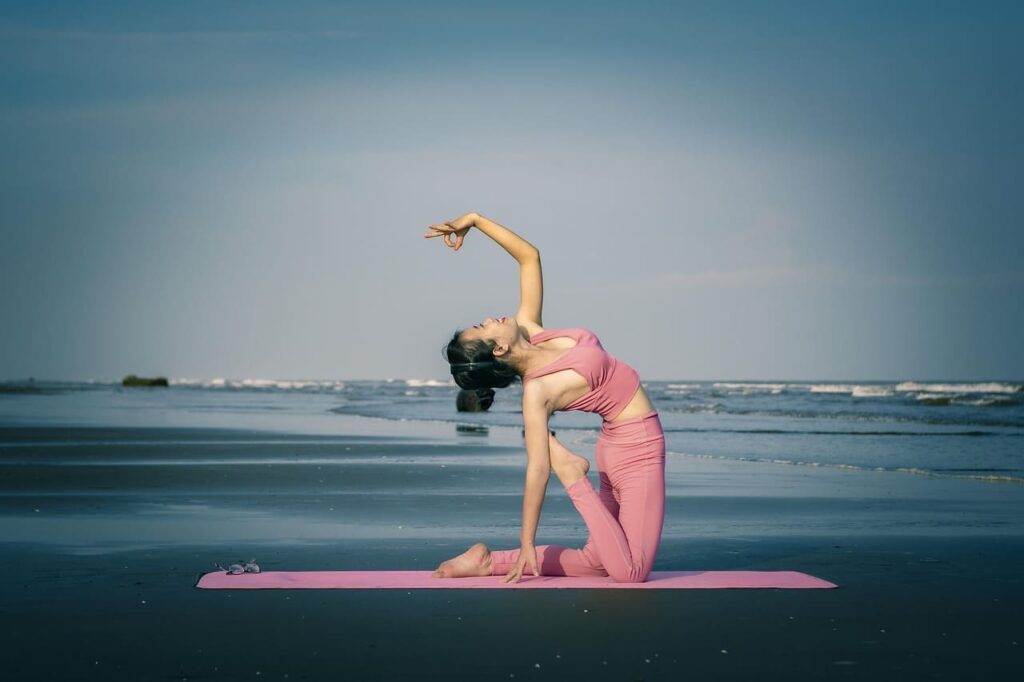
Can Be Intimidating for Beginners:
Walking into a gym full of machines and heavy lifters can be be little frightening and make you lose your confidence.
Risk of Injury:
If you don’t focus on the proper form while lifting heavier weights beyond your limit or without proper warm-up up it can lead to serious injury.
Often Focused More on Physical Than Mental Health:
While gym training is great for the body, but it does not focus or help you in dealing with mental stress or anxiety.
4. Yoga: Benefits and Limitations
Now let’s look at what yoga brings to the table. Now let’s examine what yoga has to offer.
The Benefits of Yoga Practice
Enhances Flexibility and Balance:
Yoga involves holding different body poses that help stretch your body and improve coordination over time
Advocates Mental Clarity and Stress Relief:
Yoga’s meditative practices, such as breathing exercises, mediation, and the mindfulness invoked through movement, can help mollify anxiety and quiet the mind.
Improves Posture and Joint Health:
The many poses in yoga focus on the spine, hips, shoulders and joints, areas that are easily ignored in today’s lifestyle.
Encourages Mindful Movement:
Unlike the high-energy vibe of the gym, yoga focuses on steady breathing as a way to connect and control your body
Low-Impact and Accessible:
Yoga is gentle on the joints and suitable for all ages, from teenagers to seniors.
Limitations of Yoga
Might Not Be Able To Gain A Lot Of Muscle:
Yoga can strengthen and define muscles, but it doesn’t support significant muscle growth like weight training does
Slower Visible Physical Transformation:
If you’re after a physical transformation within short order, it may also seem like yoga delivers them more slowly.
It Might Seem a Bit Less Dynamic or Energetic to Some:
If you are a fan of high-intensity workouts, traditional yoga may seem a bit too quiet or low-impact for you.
5. Goal-Based Comparison: Gym or Yoga?
Here’s a quick guide to which option fits different fitness goals better:
| Fitness Goal | Better Option | Why |
| Weight Loss | Gym (faster), Yoga (sustainable) | Gym burns calories faster, but yoga helps reduce stress-related weight gain and improves metabolism long-term |
| Muscle Building | Gym | If you’re looking to build muscle and get stronger, strength training is one of the most effective ways to do it |
| Flexibility | Yoga | Yoga specifically targets flexibility through dynamic and static stretches |
| Stress Management | Yoga | Yoga includes breathing, mindfulness, and meditation |
| Overall Health | Both | Combining both yields physical and mental health benefits |
| Injury Recovery | Yoga (gentle forms) | Yoga helps restore movement and manage pain safely |
6. Can You Combine Both?
Absolutely, yes!
In fact, blending gym and yoga can also be the best fitness choice. Where the gym creates physical strength and stamina through resistance, yoga has the opposite effect by bringing mobility, stress relief and faster recovery.
Benefits of a Combined Approach
- Quick recovery from intensive gym exercises
- Increased flexibility and less muscle tension
- Increased mental clarity and less burnout
- Better body-mind awareness
Sample Weekly Routine: Gym + Yoga
| Day | Activity |
| Monday | Gym – Strength Training (Upper Body) |
| Tuesday | Yoga – Stretching & Breathwork |
| Wednesday | Gym – Cardio or Lower Body Workout |
| Thursday | Yoga – Vinyasa Flow or Yin Yoga |
| Friday | Gym – Full Body Workout |
| Saturday | Yoga – Gentle or Restorative Session |
| Sunday | Rest or Nature Walk |
You don’t have to spend hours on each. Even a 20-minute yoga session post-gym can make a big difference.
7. How to Choose What’s Right for You Yoga or Gym
Still unsure? Here’s how you can make a good decision:
Evaluate Your Preferences and Goals
Starting with the gym will let you want rapid weight loss or muscular gains. If your goal is to reduce stress or become more flexible, yoga could be the right choice for you.
Think about your lifestyle and time
Not much time to spare? Short home-based yoga Meetings could be more effective.
Love structured exercises? Gym memberships or personal trainers might be beneficial.
Analyse Your Body Type and Energy Levels
Some people like lifting weights and vigorous movement by nature.
Some people find the slower tempo of yoga appealing; others feel exhausted after gym meetings.
Your Mental Health Needs are Equally Important
Yoga can provide great relief if you feel overwhelmed, anxious, or scattered by means of mindfulness exercises.
Start with Trial Sessions
Don’t add blindly. Examine both a few yoga lessons and a few gym workout sessions to see which of these 2 is your type and aligns with your goals
8) Space & Equipment Needs for Home Practices
For working out at home, both gym and yoga practices can be modified to be done in small or big spaces, however fancy you want to make it. Ideally, you just need enough space for a yoga mat and free arm-leg movement to practice from home. A quiet, uncluttered corner will often do. You can also benefit from props like yoga blocks, bolsters and straps, which can help make for a more comfortable practice, though they aren’t required. A home gym setup, on the other hand, typically requires space and a number of tools.
However, bodyweight exercises can still be effective for gym-style training with minimal gear. If you’re short on space or prefer a minimalist setup, yoga might be the more convenient option.
9) Expert Opinions: What Do Trainers and Yoga Teachers Say?
Fitness coaches and yoga teachers often agree on one simple truth: the best exercise is the one you stick to. Fitness instructors understand that resistance training helps with muscle growth, bone density, and metabolic health as we age. They usually emphasize cardio, even though strength training might offer better overall fitness benefits. Yoga teachers, while focusing more on holistic and physical aspects, value the mind-body connection, stress relief, and long-term joint health, all of which come from regular yoga practice.
Some even suggest that adding low-volume resistance training to your dedicated yoga routine can improve stability in various poses. Today, many professionals from both fields are recommending a hybrid approach that combines weightlifting, yoga, or strength-focused gym sessions. In general, they advise creating a workout schedule that reflects your goals, history, energy levels, and lifestyle, rather than sticking to any labels.
Conclusion
So, what’s the final answer, gym or yoga?
The reality is, both yoga and gym workouts can be part of a well-rounded fitness routine. The best choice depends on your goals, how your body reacts, and what you enjoy. Gym workouts build strength and offer quick results. Yoga provides balance, flexibility, and calm.
Often, the smartest approach isn’t choosing one over the other—it’s combining both
Choose what you love, mix it up when you can, and, most importantly, stay consistent. Fitness is a journey, not a race.
